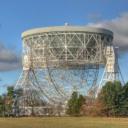Yahoo Answers is shutting down on May 4th, 2021 (Eastern Time) and the Yahoo Answers website is now in read-only mode. There will be no changes to other Yahoo properties or services, or your Yahoo account. You can find more information about the Yahoo Answers shutdown and how to download your data on this help page.
Trending News
How is the hidden restore partition on a 32 GB Asus T100TA Transformer Book used?
The Asus T100TA tablet/netbook with 32-bit Windows 8.1 has a hidden 7.5 GB partition that is not normally visible when Windows is running normally. However, when in Safe Mode, the partition is visible in the Diskmgmt.msc tool although it does not have a letter assigned to it. It is possible to assign a letter to the drive, after which it can be accessed in File Explorer until the system is rebooted, at which point the drive loses its letter again.
The hidden partition has two hidden folders (RecoveryImage and RecoveryBoot) and a file (PQA.CMD). The RecoveryImage folder contains a file called Install.wim, and the RecoveryBoot folder contains a file called Boot.wim plus two other small files. The file PQA.CMD seems to set up a number of variables, one of which is the serial number on the computers label.
There does not seem to be way to invoke a recovery. The option in the recovery section of Control Panel provides a facility to create a recovery drive on a USB memory stick, but the option to copy the recovery partition is greyed out, possibly because the restore partition is not visible. Windows will not allow the creation of a recovery drive while in safe mode.
Does the restore partition actually allow the system to be returned to the factory state?
If so, how is this achieved?
3 Answers
- 5 years agoFavorite Answer
On the SSD, there are 3 small partitions that together occupy around 1 GB and the C: drive, which occupies just over 28 GB. The total SSD is just under 30 GB, and is not a true SSD but is eMMC memory.
The tool to create a recovery USB drive only requires a 512 MB drive, and puts enough on the drive to allow the C: drive to be returned to its factory state. However, it does not put the actual files to reload the C: drive on the USB drive. These files are on a hidden read-only partition that can be seen only in safe mode. If the whole of the SSD has been trashed, then the tools do not allow for a complete rebuild. It is only the C: drive that can be repaired and the other three partitions must still be undamaged. The tools either in one of the three small partitions or on the USB drive are sufficient to reinstall Windows and various applications that are stored in the hidden read only partition.
If you boot the T100TA from a Linux Live USB drive, you can copy /dev/mmcblk0 that is the SSD to another drive for security. If there is a problem, then this backup can be copied back on to the computer. Since this is the complete SSD, then it will restore the three small partitions as well as the C: drive. The whole operation of backing up or restoring takes less than an hour.
Although I have managed to run live Linux and restore a backup of the SSD from a single USB drive, I have not found a way of doing this during the actual backup as I have not found a live Linux distro that allows writing to the USB drive running Linux. To do a backup either requires a USB hub, or to connect one of the drives (the Linux live drive or the backup media) to the charging port. Personally, I have used a USB3 drive to hold the backup and plugged this into the full size USB port on the keyboard, which is a USB3 port. The micro port on the screen section, that is used for charging is USB2.
I have also found that the T100TA will run a 64 Linux system, but will only run a 32 bit Windows system. I believe this is some restriction imposed by Microsoft.
- TWBLv 75 years ago
This should do it even if you are using a tablet.
If your resetting a lappy, make sure you have the AC adapter plugged up. You do not want this process interrupted. This should take one or two hours. It is best to check on it to make sure everything is going fine.
Using the Recovery Partition (on selected models)
1. Press the power button and start tapping the F9 or the ESC key. I have also seen the volume+power open the recovery on tablets.
The Link below has the different laptop model numbers and the FN key to use.
http://supportforasus.iyogi.com/content/dam/suppor...
2. Press [Enter] to select Windows Setup [EMS Enabled].
3. Select the language you want to recover and click Next.
4. Read the ASUS Preload Wizard messages and click Next.
5. Select a partition option and click Next. Partition options:
Option 1 Recover Windows to first partition only.
This option deletes only the first partition and allows you to keep other partitions, and to create a new system partition as drive "C".
Option 2 Recover Windows to entire HD.
This option deletes all partitions from your hard disk drive and creates a new system partition as drive "C".
Recover Windows to entire HD with two partitions.This option deletes all partitions from your hard drive and creates two new partitions "C" (25%) and "D" (75%).
6. Follow the onscreen instructions to complete the recovery process.
Source(s): TWB 35+ years of experience in the service industry. You name it, I have probably fixed it. I did not design it, I did not build it, I did not break it, but I am the one who can fix it. What that means is that I have spent a life time taking these things apart and seeing how they are made. The difficult we do right away, the impossible just takes a little longer. I hear voices, so please be quiet so I can listen to them. - 5 years ago
When you create a Recovery Drive on a USB memory stick, it is programmed to access the normally hidden partition and overwrite the files on C:\ with the original files that were on C:\ when you first turned it on.
The clever people who created this system have written scripts and binaries to accomplish these tasks when you initiate the recovery process.
The RecoveryImage folder contains all the files (in a compressed format) that were on the C: drive when it left the factory. The Recovery Drive on a USB memory stick unpacks the files and writes them to C:\ in the correct locations where they belong.




